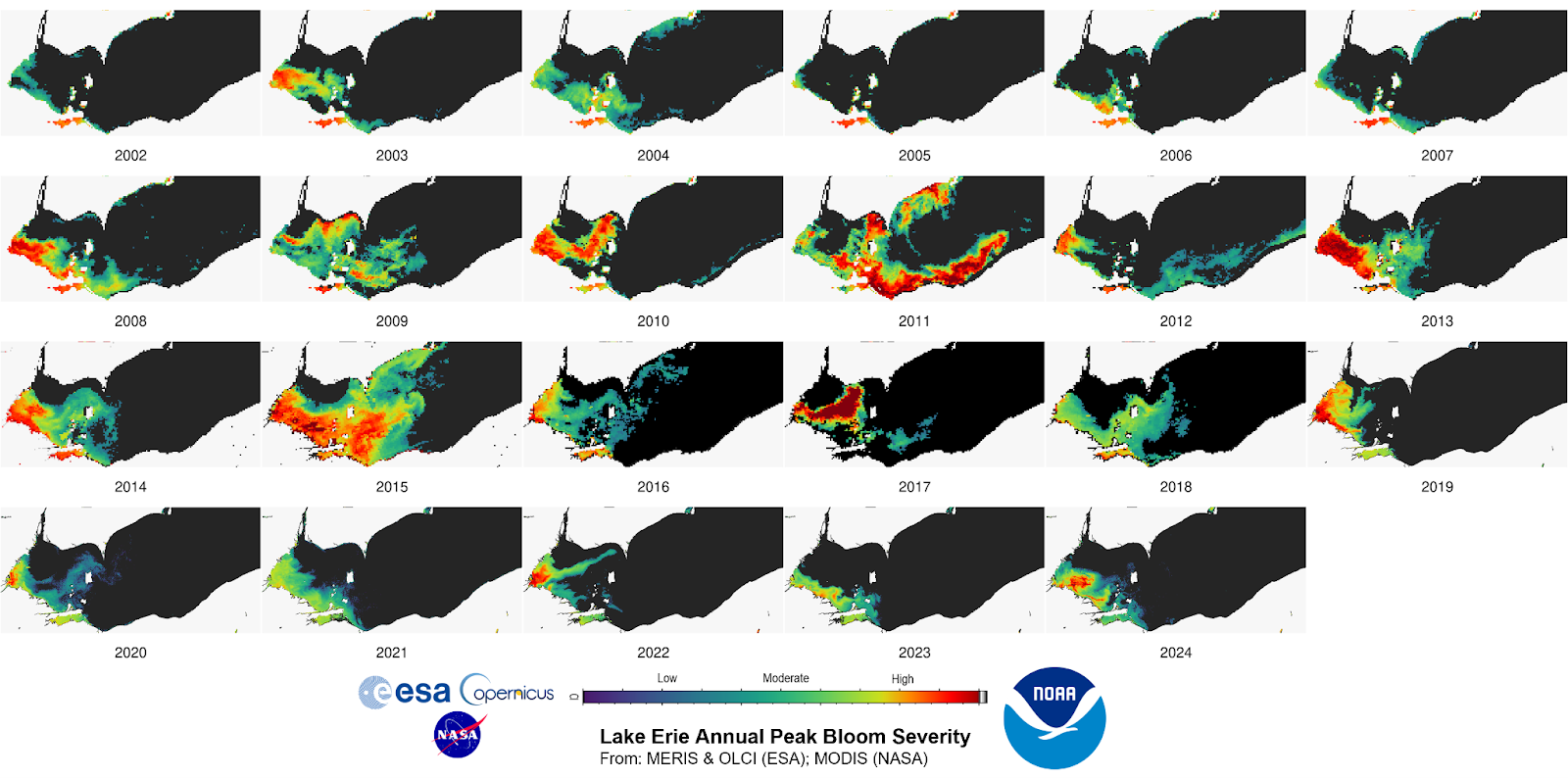The 2024 western Lake Erie cyanobacterial bloom had a severity index (SI) of 6.6, which is moderately severe, and more intense than 2023 (SI of 5.3). The SI captures the amount of biomass over the peak 30-days of the bloom, calculated using satellite imagery.

Bloom severity was slightly above the seasonal forecast issued on June 27, which predicted a SI between 4.5 and 6. Since 2002, the 2024 bloom was the earliest bloom start on record, followed by 2018 and 2023. Formation started in late June along the Michigan coast, and the bloom was fully developed by early July. While the bloom was established early, it developed slowly, increasing in size and becoming more severe through July. The maximum biomass was still observed in mid-August, similar to past years, however the bloom peak in August only lasted for about a week, unlike recent years when the blooms were at peak through most of August. The bloom decreased in size and severity until mid-September. Cooler temperatures and elevated winds in late-September substantially reduced the biomass, although some bloom patches continued through October.
At its peak, the bloom covered 550 square miles. Through the season, the bloom stayed closer to the U.S. coast, primarily from Monroe, MI to Port Clinton, OH. The location, biomass, and spatial extent of the bloom are impacted by wind direction and speed. A typical year has more wind from the southwest, which spreads the bloom out across the lake. This year, Lake Erie experienced only a brief period of southwest wind, most winds were either from the west or east, which pushed the bloom back and forth between Michigan and Ohio coasts.
The seasonal forecast uses an ensemble of different models, which consider phosphorus loading into the lake during the spring and early summer. NOAA scientists will examine the differences between observed and predicted bloom severity in comparison with forecasts for previous years to evaluate the models.
For the full final bulletin and seasonal assessment, click here.
For more information on the Lake Erie HAB forecast, click here.
